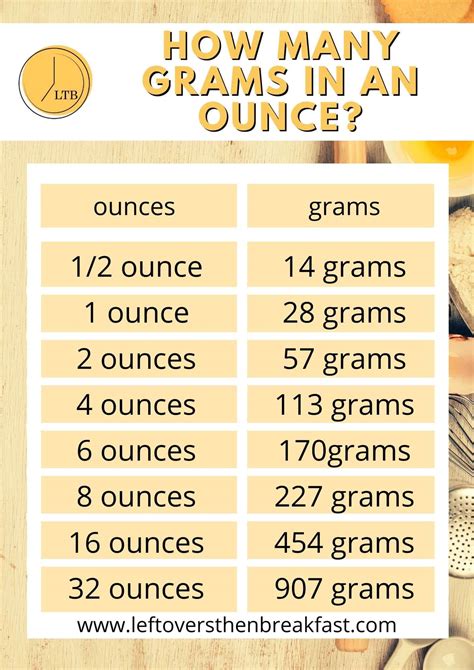How Many Grams In 1.4 Ounces
Kalali
Apr 02, 2025 · 4 min read

Table of Contents
How Many Grams in 1.4 Ounces? A Comprehensive Guide to Unit Conversion
Understanding unit conversions is crucial in various aspects of life, from cooking and baking to scientific research and engineering. One common conversion involves ounces and grams, two units used to measure weight or mass. This comprehensive guide will delve into the conversion of 1.4 ounces to grams, explaining the process, providing the answer, and exploring related conversions and applications.
Understanding Ounces and Grams
Before diving into the conversion, let's briefly understand the units involved:
-
Ounce (oz): A unit of mass in the imperial and U.S. customary systems. There are 16 ounces in one pound. The ounce can refer to different types depending on the context, such as the avoirdupois ounce (used for most everyday measurements), the troy ounce (used for precious metals), and the fluid ounce (a unit of volume). For our purposes, we'll be focusing on the avoirdupois ounce.
-
Gram (g): A unit of mass in the metric system. A gram is a smaller unit than an ounce. The gram is a fundamental unit in the International System of Units (SI). Kilograms (kg), a larger unit, are often used for larger masses.
Converting 1.4 Ounces to Grams: The Calculation
The conversion factor between ounces and grams is approximately 28.3495 grams per ounce. This means one ounce is equal to 28.3495 grams. To convert 1.4 ounces to grams, we simply multiply 1.4 by the conversion factor:
1.4 oz * 28.3495 g/oz ≈ 39.7 grams
Therefore, there are approximately 39.7 grams in 1.4 ounces.
Understanding Significant Figures
It's important to consider significant figures when dealing with conversions. The conversion factor (28.3495 g/oz) has five significant figures. Since our starting value (1.4 oz) has only two significant figures, our final answer should also have two significant figures. Therefore, rounding the result to two significant figures, we get 40 grams.
Practical Applications of Ounce-to-Gram Conversions
Understanding how to convert ounces to grams is beneficial in many scenarios:
1. Cooking and Baking:
Recipes often use either ounces or grams as units of measurement for ingredients. If a recipe uses ounces and you prefer to use a kitchen scale that measures in grams, you'll need to perform this conversion. For instance, if a recipe calls for 1.4 ounces of flour, you would use approximately 40 grams.
2. Scientific Experiments:
In scientific experiments, accurate measurements are crucial. Scientists may need to convert measurements from one unit system to another, ensuring precision in their experiments and data analysis. Converting between ounces and grams is a common requirement in many scientific fields.
3. International Trade:
When trading goods internationally, understanding unit conversions is essential to ensure accurate weight measurements for shipping, customs, and pricing. Many countries utilize the metric system, so conversions are necessary for clear communication and compliance.
4. Pharmaceutical Applications:
In the pharmaceutical industry, precise measurements of drugs and medications are critical for safety and efficacy. Converting between ounces and grams helps ensure accuracy in dosage calculations.
5. Engineering and Design:
Engineers and designers often need to convert between different units depending on the project and the specific standards used. Precise weight measurements are crucial in various engineering projects, requiring accurate conversions between ounces and grams.
Other Unit Conversions Related to Ounces and Grams
Understanding the conversion between ounces and grams opens the door to numerous other related conversions:
-
Ounces to Kilograms: Since there are 1000 grams in a kilogram, you can convert ounces to kilograms by first converting ounces to grams and then dividing by 1000.
-
Grams to Pounds: Conversely, you can convert grams to pounds by first converting grams to ounces and then dividing by 16 (since there are 16 ounces in a pound).
-
Pounds to Kilograms: This is a common conversion, often used in comparing weight measurements across different systems.
-
Kilograms to Ounces: This conversion requires converting kilograms to grams first, then grams to ounces.
Mastering these conversions provides a solid foundation for navigating various weight and mass measurements.
Tips for Accurate Conversions
To ensure accuracy in your conversions, consider the following tips:
-
Use a Reliable Conversion Factor: Always use a precise conversion factor to minimize errors. The commonly used factor of 28.3495 g/oz is accurate enough for most purposes.
-
Pay Attention to Significant Figures: Round your answers appropriately based on the significant figures in the original measurement.
-
Double-Check Your Calculations: Verify your calculations to prevent errors. Using a calculator is recommended to minimize human error.
-
Understand the Context: Be mindful of the specific type of ounce being used (avoirdupois, troy, fluid) to prevent misinterpretations.
Conclusion: Mastering Ounce to Gram Conversions
Understanding how to convert 1.4 ounces to grams, and more broadly, how to convert between ounces and grams, is a valuable skill with wide-ranging applications. From everyday tasks like cooking to complex scientific calculations, mastering this conversion ensures accurate measurements and effective communication across different systems of measurement. By applying the conversion factor correctly and paying attention to significant figures, you can confidently navigate this common unit conversion and avoid potential errors. Remember the key: 1.4 ounces is approximately equal to 40 grams.
Latest Posts
Latest Posts
-
Cuanto Es El 25 De 100
Apr 03, 2025
-
How Many Gallons Are In 3 Liters
Apr 03, 2025
-
How Many Feet Are In 78 In
Apr 03, 2025
-
How Many Hours Is 130 Minutes
Apr 03, 2025
-
How Many Inches Are In 120 Cm
Apr 03, 2025
Related Post
Thank you for visiting our website which covers about How Many Grams In 1.4 Ounces . We hope the information provided has been useful to you. Feel free to contact us if you have any questions or need further assistance. See you next time and don't miss to bookmark.
